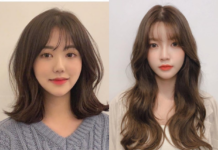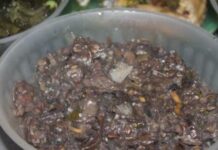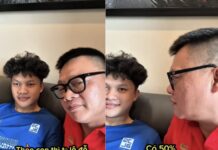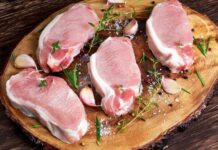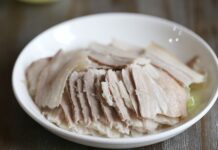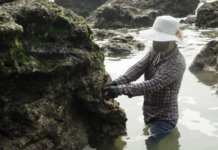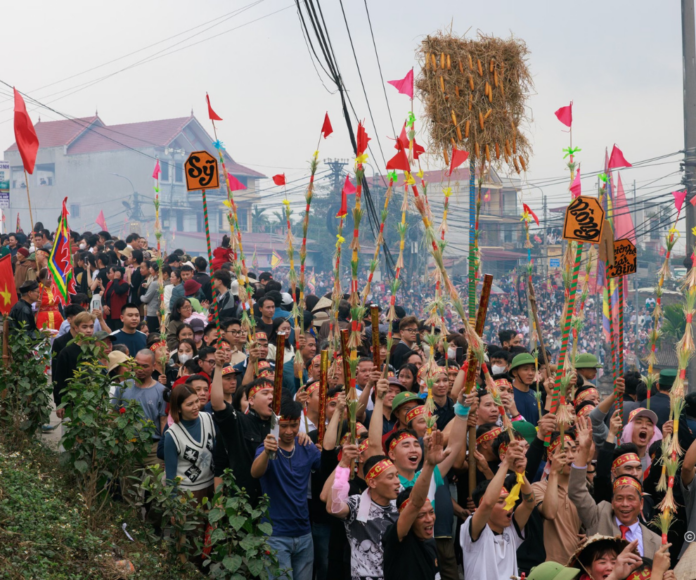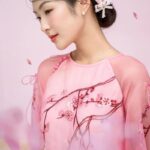The Silk Cocoon Festival is an annual event steeped in history and tradition, believed to have originated in the early 20th century. The festival is an important cultural event for the people of Van Sa village, with strong associations to fertility and agricultural prosperity.
The festival features a unique blend of rituals, including the procession of flowers, the silk cocoon parade, and the display of ancestral photos. These ceremonies not only express the villagers’ desire for abundance and fertility but also emphasize the sacred role of women in Vietnamese folk culture and beliefs.
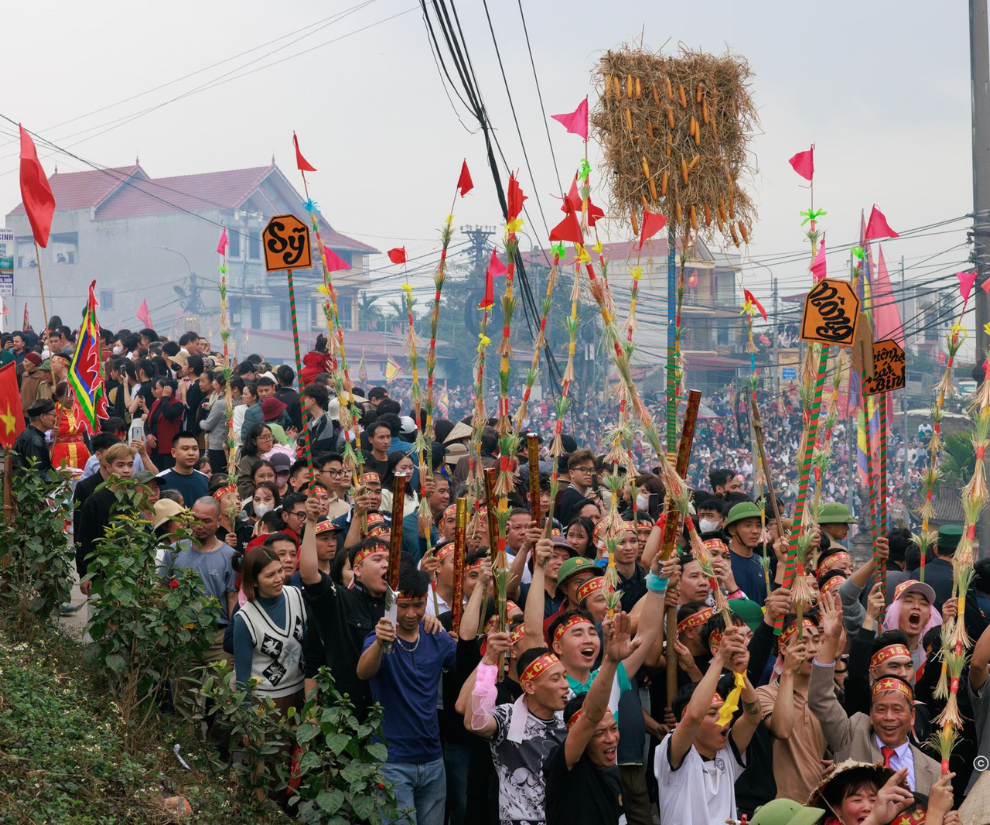
The ceremony is a solemn affair, showcasing the village’s cultural traditions and community spirit. On the fourth day of the Lunar New Year, the festival commences with a military procession led by the village head, riding horseback and accompanied by a group of 12–14 men dressed as soldiers.
At the forefront is the flag bearer, followed by a drummer playing a small handheld drum. Bringing up the rear is a villager carrying a bamboo loudspeaker, used to announce the festival’s commencement and remind the villagers of their roles and responsibilities in upholding the traditional rituals.
The fifth day of the Lunar New Year marks the main festival day, with a vibrant atmosphere as villagers and visitors flock to the communal house. Early in the morning, the village’s neighborhoods, known as “giap,” begin their processions. Each procession is a collaboration of two or three “giap,” and in years of abundant harvests, the number of processions can reach four or five.
The processions are a spectacle of elaborate offerings, including traditional items such as oan (a type of steamed glutinous rice cake), fruits, sticky rice, chicken, betel, areca nuts, wine, and flowers. These offerings are presented at the communal house as a form of tribute to the village gods.
A unique ritual called “rước văn” is then performed, where a special palanquin carried by eight people is sent to the home of the village’s oldest and most respected scholar to obtain the ceremonial text. This text is then offered to the village gods, seeking blessings for a peaceful and prosperous new year.
As the festival reaches its climax, a tall scaffold is erected in the courtyard, adorned with dozens of golden silk cocoons hanging tantalizingly out of reach. Under the spring sunshine, the cocoons shine brilliantly, attracting the attention of hundreds of villagers and curious onlookers.
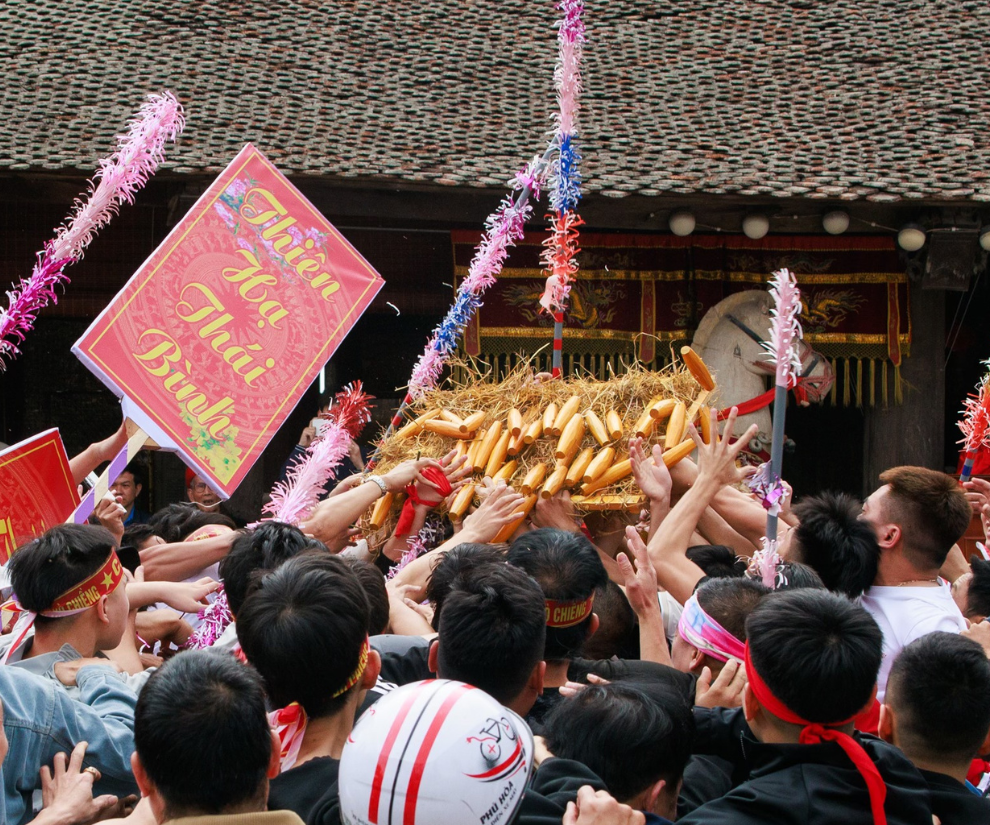
According to tradition, whoever manages to capture a cocoon is believed to be blessed with good fortune, abundant harvests, smooth endeavors, and a harmonious family life for the coming year.
As the festival drums beat with increasing intensity, the tranquil courtyard transforms into a frenzied scene. Dozens of young men rush towards the scaffold, their voices raised in enthusiastic chants. They stretch their arms, vying to pluck the dangling cocoons, while the crowd cheers them on. It is a display of youthful vigor, agility, and determination, all in the spirit of friendly competition.
The cocoon-grabbing contest is more than just a test of physical strength; it symbolizes community unity and the joy of gathering at the beginning of a new year. Whether successful in obtaining a cocoon or not, participants find excitement and fulfillment in immersing themselves in the festive atmosphere and sharing in the collective happiness of the occasion.
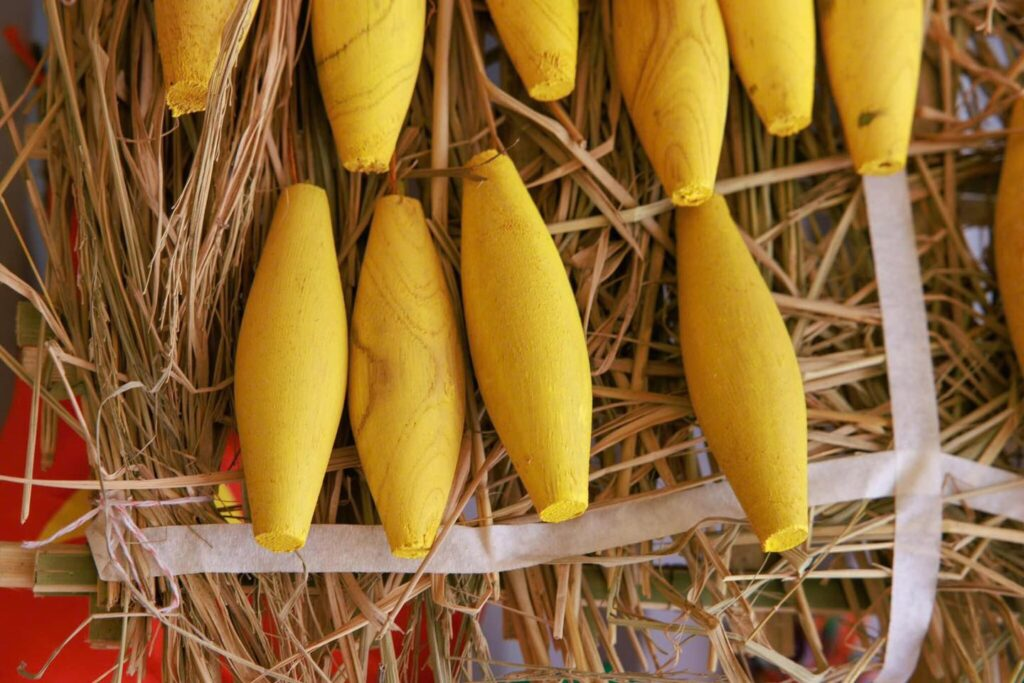
The image of golden silk cocoons symbolizes abundance, prosperity, and good fortune.
As the festival draws to a close, the young men who managed to capture the most cocoons are congratulated and celebrated by the villagers. It is believed that their success brings not only personal luck but also spreads blessings of wealth and peace to their families and clans for the entire year.
Thus, the tradition of cocoon grabbing has been meticulously preserved through generations, becoming an integral part of the region’s unique spring festival culture.
In addition to the thrilling cocoon-grabbing event, the festival offers a range of other attractions, such as the “tu dan lac nghiep” performance depicting the four traditional occupations of scholar, farmer, artisan, and merchant, as well as folk dances, tug-of-war, traditional wrestling, and singing duels. Together, these activities create a vibrant cultural space where the past meets the present, and where the elderly impart valuable traditions to the younger generations.
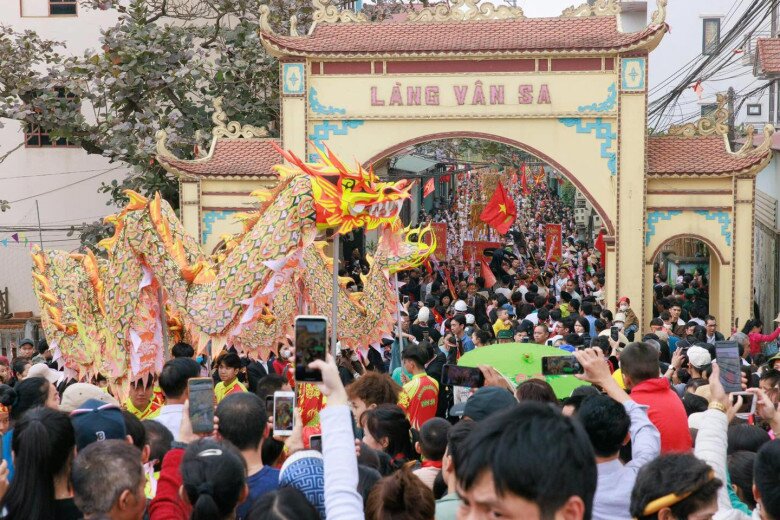
The Silk Cocoon Festival attracts visitors from far and wide, bringing life and excitement to Van Sa village.
Today, the festival holds both spiritual and communal significance for the people of Hanoi. It serves as a platform for community bonding and the preservation of unique traditional cultural values. Before the cocoon-grabbing event, a solemn procession is held to carry the long ngai (a ceremonial tablet) of the local deities, followed by a colorful entourage of flags and flower palanquins. The highlight of the festival, the cocoon-grabbing ritual, attracts hundreds of young men from the region and curious tourists who wish to immerse themselves in this unique cultural experience.
5 Updo Hairstyles to Elevate Your Look with the Classic ‘Ao Dai’ for Tet 2025
The Lunar New Year 2025 is just around the corner, and alongside the graceful ao dai outfits, choosing the right hairstyle is a top priority for women. Among the myriad of hairstyles, the bun always takes precedence for its elegance, sophistication, and ability to accentuate the beauty of Vietnamese women.

